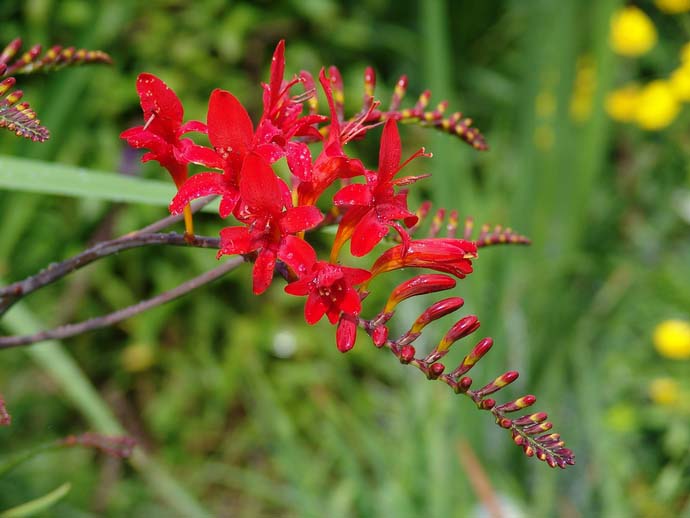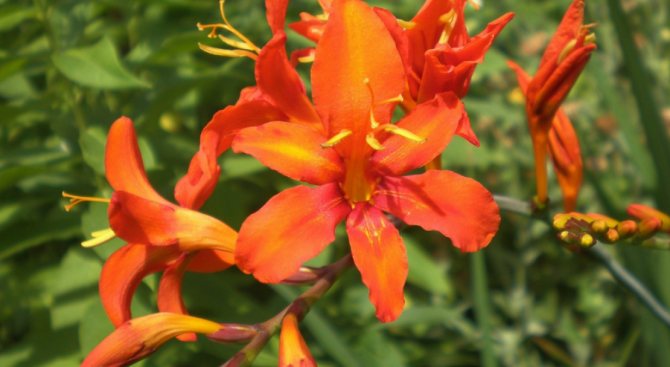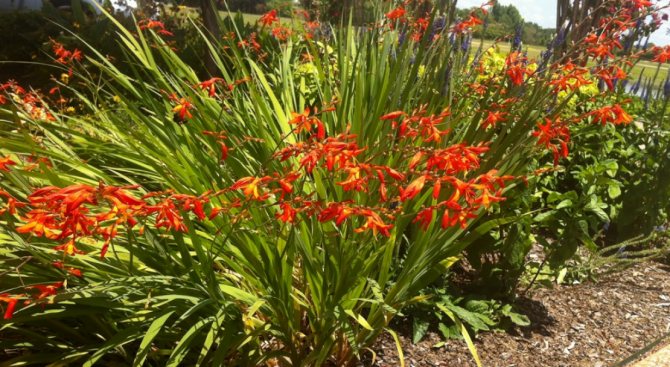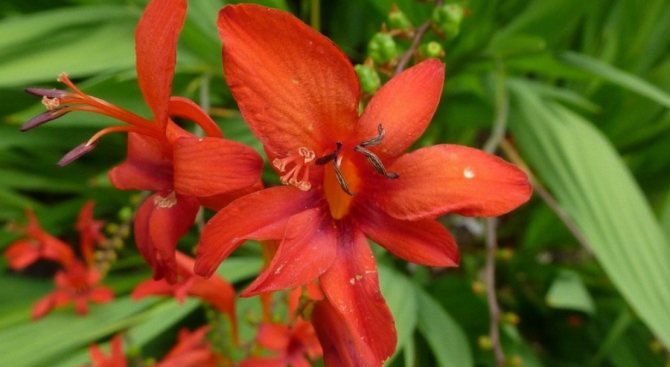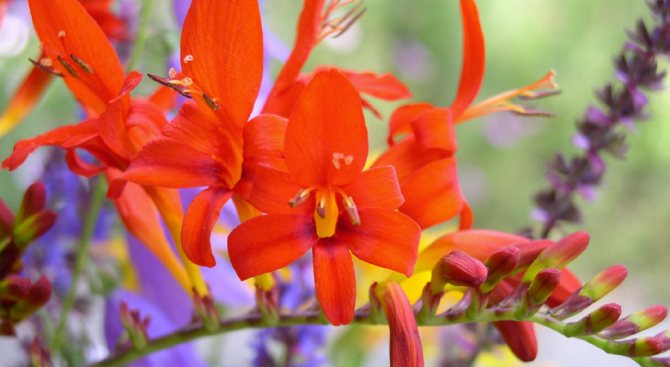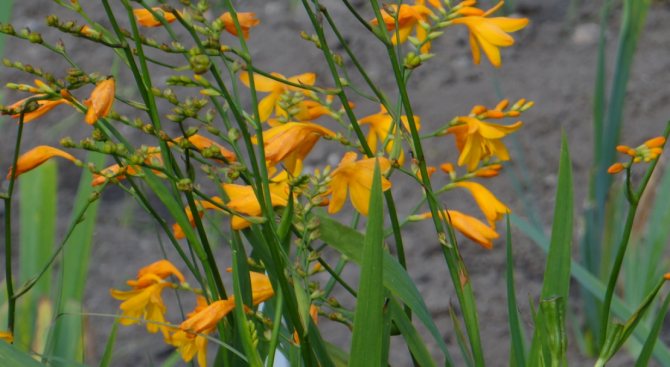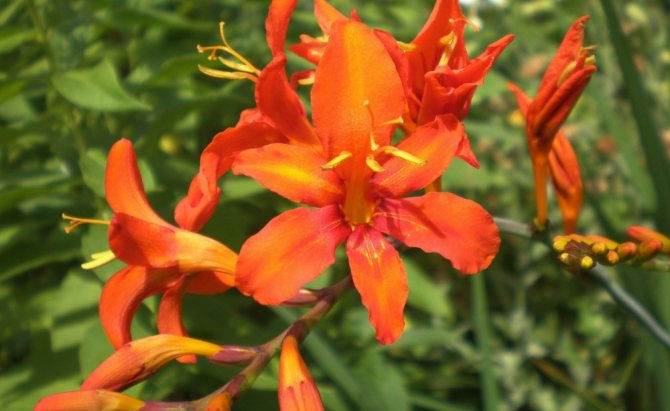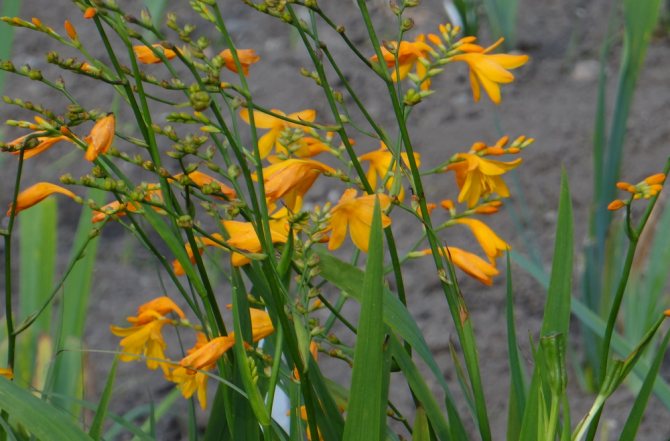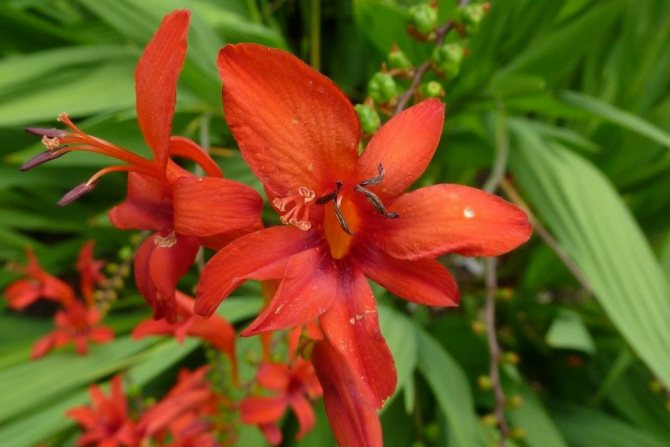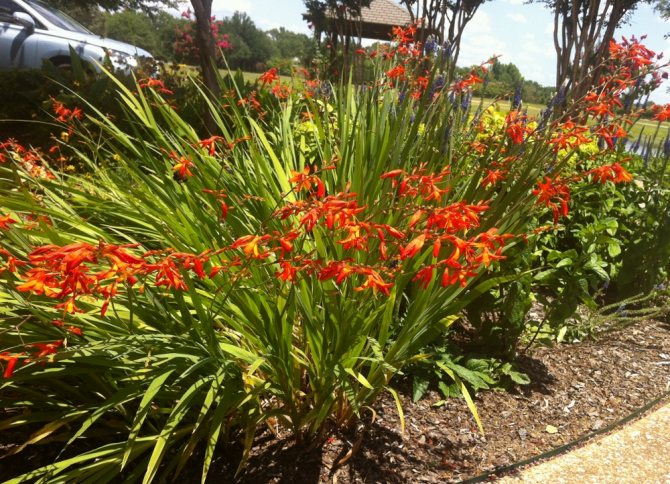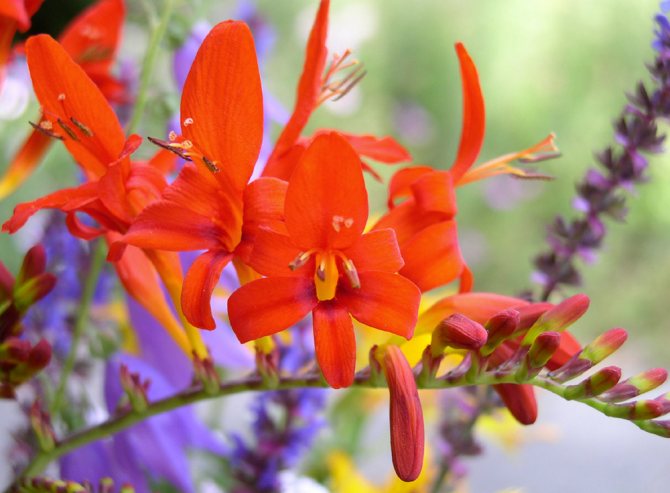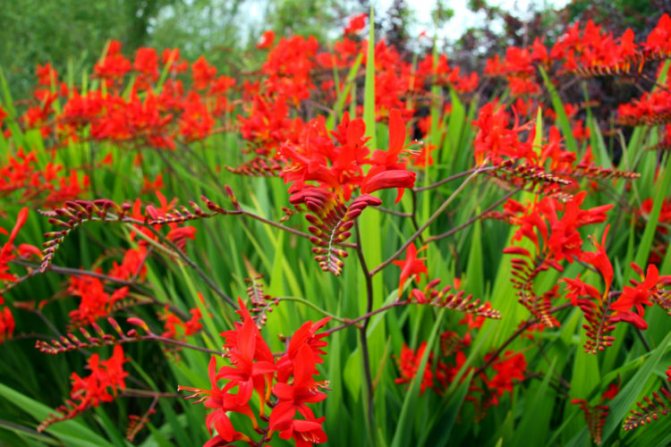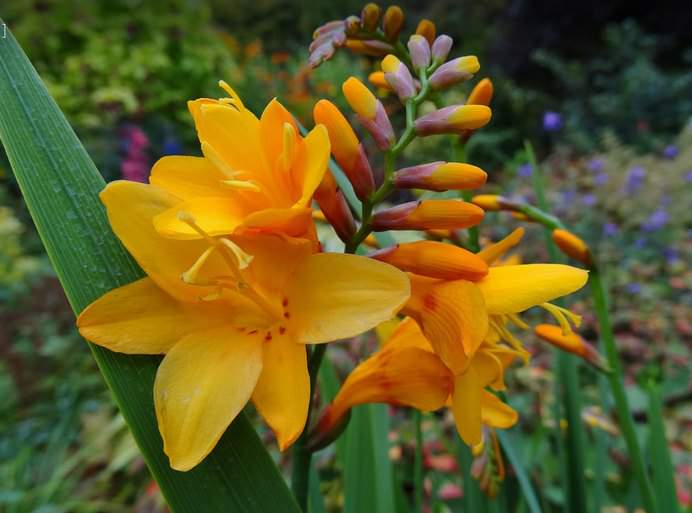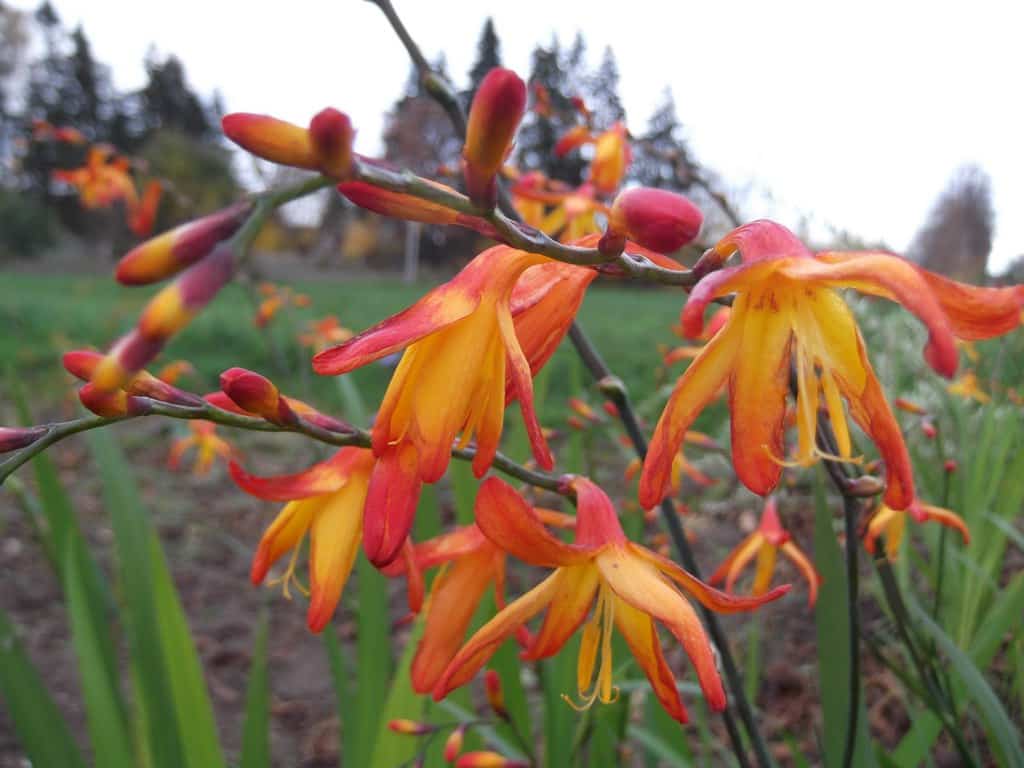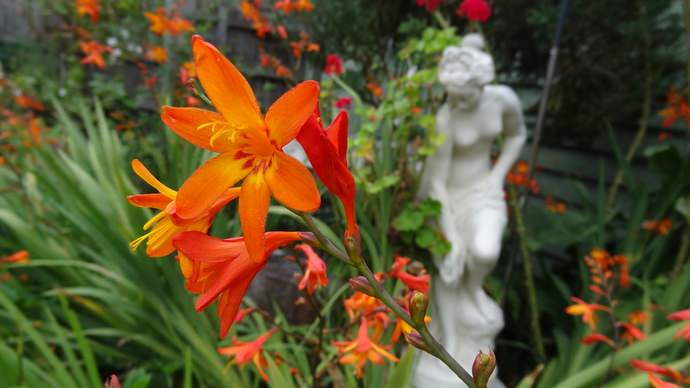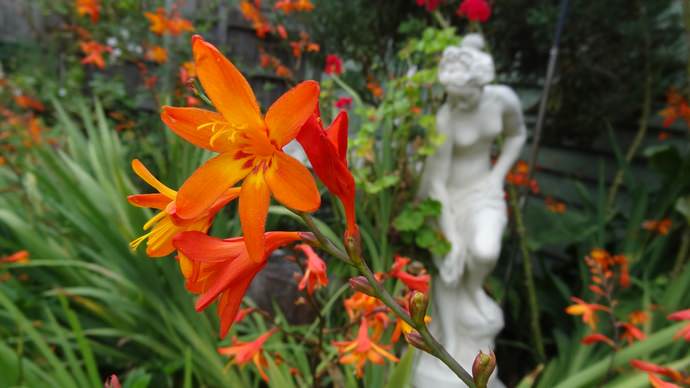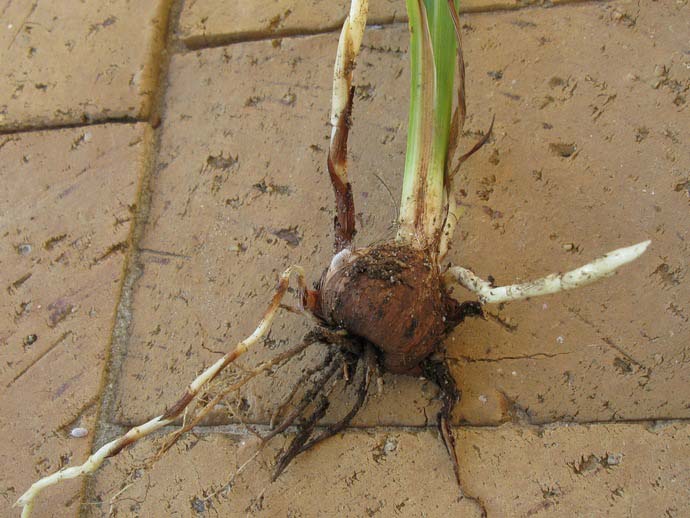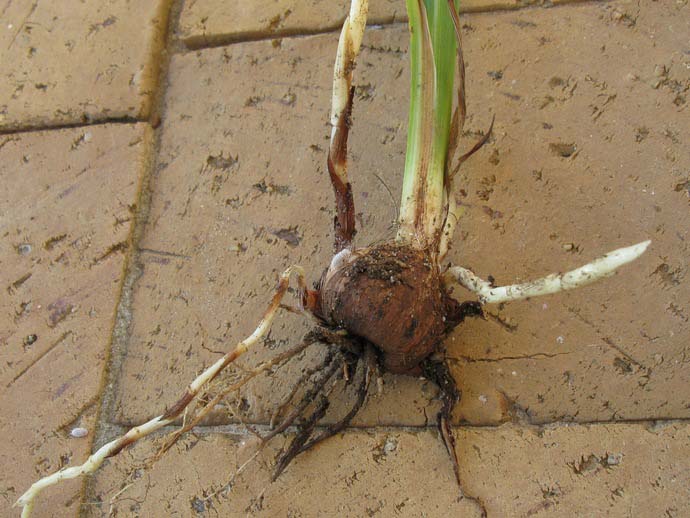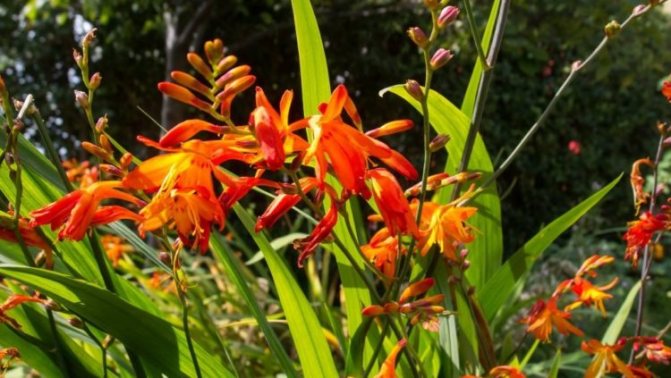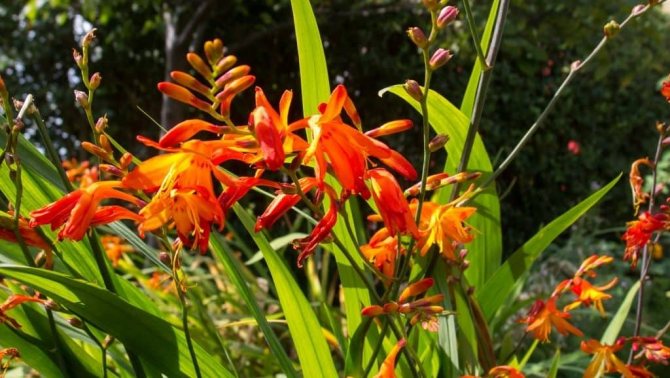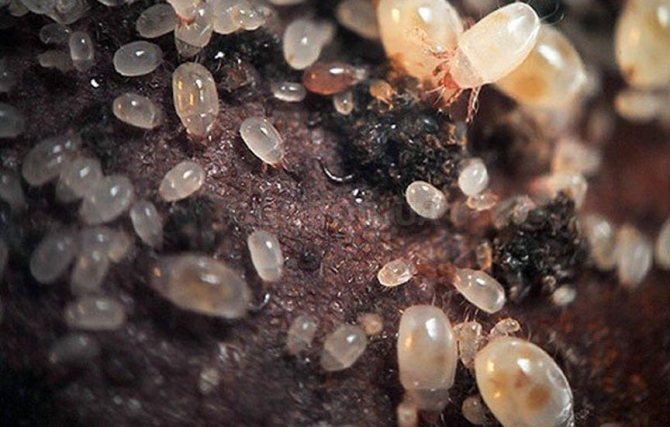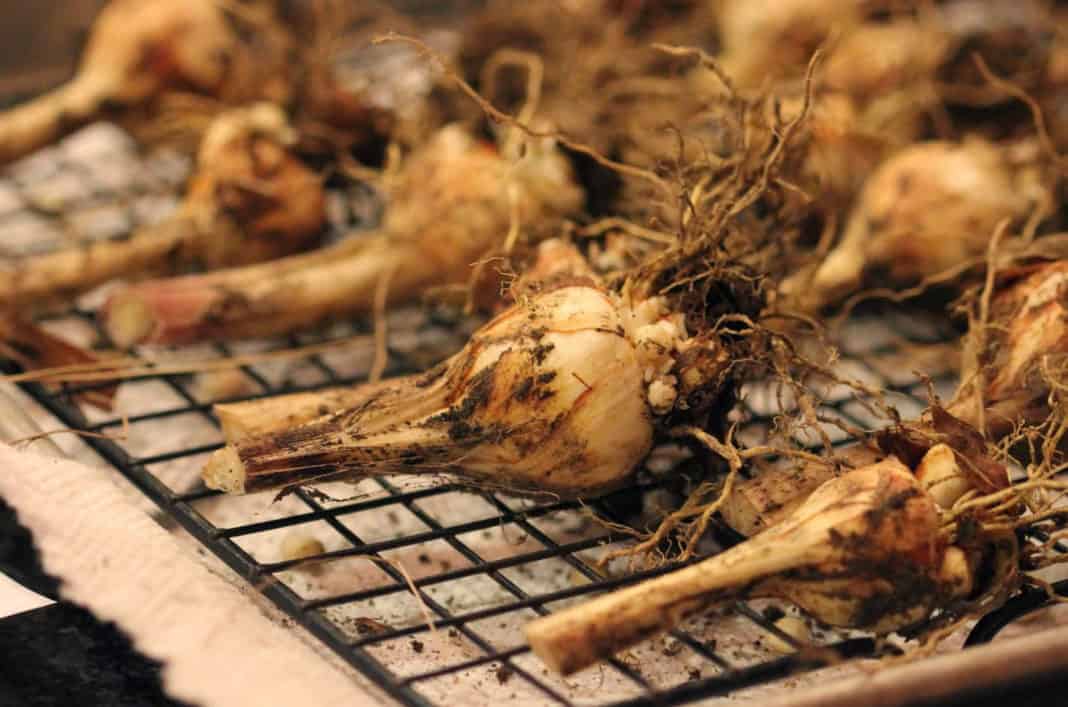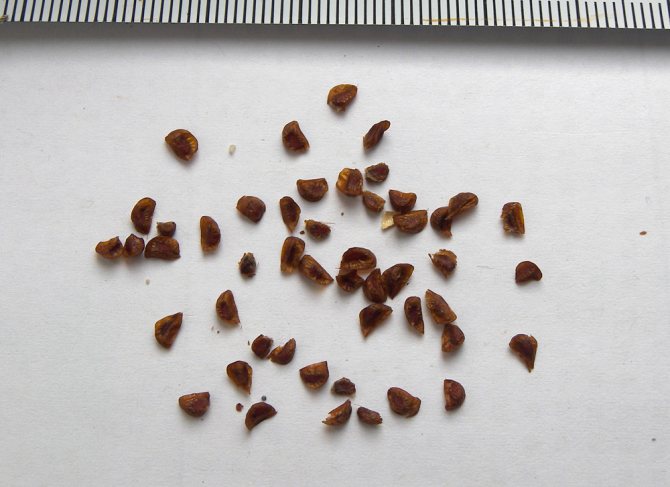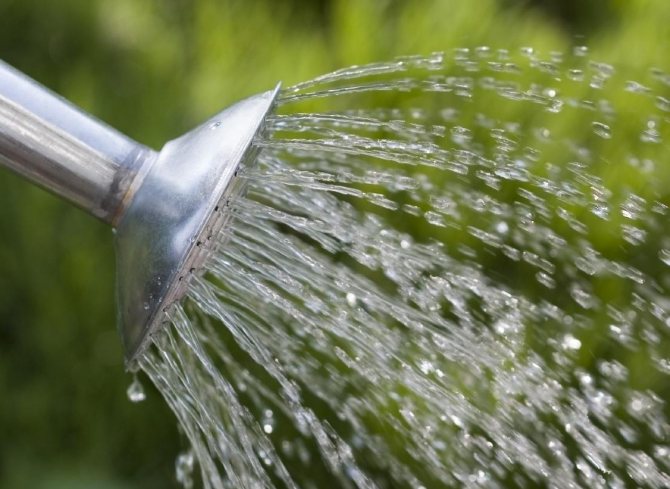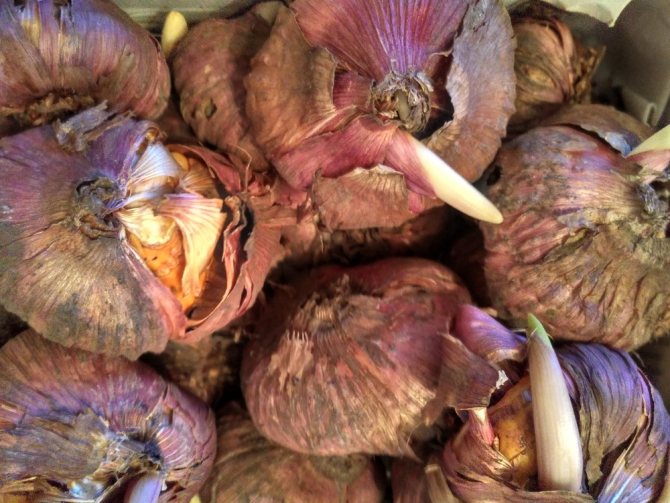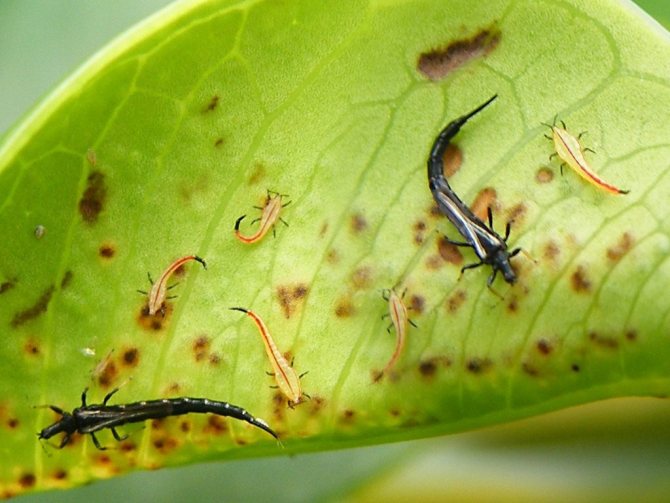Chinese, or Japanese gladiolus, also known as montbrecia or crocosmia, is a beautiful and unpretentious plant that will adorn any garden. The main advantage of this unusual plant is that it blooms from early summer to late autumn, depending on the variety. The variety of shades is impressive too. Crocosmia can bloom in bright scarlet, yellow or orange flowers. However, in order for the gladiolus to take root well and delight with its unusual appearance, it must be planted, observing certain rules. The same goes for leaving.
Description of the plant
The plant is called crocosmia (Latin Crocosmia) or montbrecia. Like gladiolus (skewer), it also belongs to the Iris family, but to a different genus. This flower is often used in landscape design, as it is unpretentious in maintenance, has a long flowering period and an attractive appearance. During the flowering period, the plants are decorated with small, delicate and beautiful flowers in the shape of a star. Their diameter is 5 cm. Crocosmia panicles are outwardly similar to iris. The plant blooms from July to September - October.
Did you know? In the era of antiquity, the sharp leaves of gladiolus evoked associations with weapons, so its tubers were considered amulets that could save a warrior from death.
The flower smells nice, not intrusive, distantly resembling saffron. The corms of the plant are small, covered with three layers of protective peel. Three peduncles are obtained from one bulb. The root system consists of two tiers. The first represents the roots of the mother bulb, and the second grows between the planting bulb and the replacement bulb. The leaves grow up to 60 cm long, having a xiphoid shape. The stem is branched and thin; growing, reaches 1.5 m.
Japanese gladiolus (crocosmia): species
- Crocosmia Panikulata is an early flowering tall plant with medium-sized bright orange flowers. Compared to the rest, it is the most frost-resistant species, tolerating wintering well, provided that a small shelter is provided.
- Crocosmia Lucifer is a hybrid created on the basis of Paniculat crocosmia. The flowers are coral-red. Frost resistance is relative.
- Crocosmia Golden. It is characterized by large (about 5 cm in diameter), yellow-orange flowers. Able to grow in small shade. The flowering period is autumn. Looks great when cut.
- Crocosmia ordinary. The most common hybrid of the Japanese gladiolus in culture, obtained by crossing the crocosmia Pottsi and Golden. Plant height is about 1.2 meters. Flowering occurs at the end of the summer period.
Montbrecia is characterized by high resistance to pests and diseases; needs minimal maintenance: watering, weeding, feeding and removing weeds.
What are the varieties
The most popular crocosmia varieties are as follows:
- Lucifer... It tolerates cold weather, down to -30 ° C. Reaches a height of 1.5 m. Inflorescences are bright red.
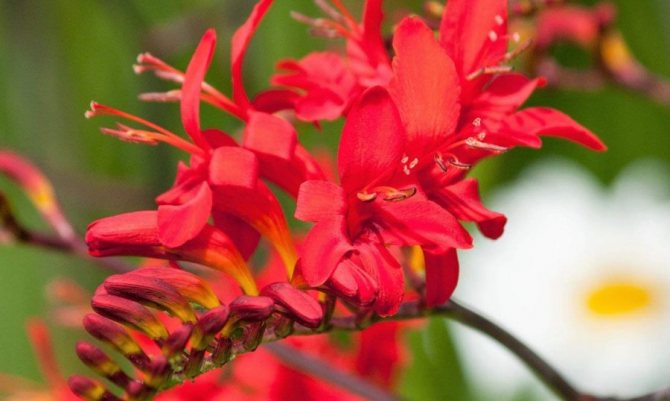
- Mainos... Frost resistant. Inflorescences are deep red.
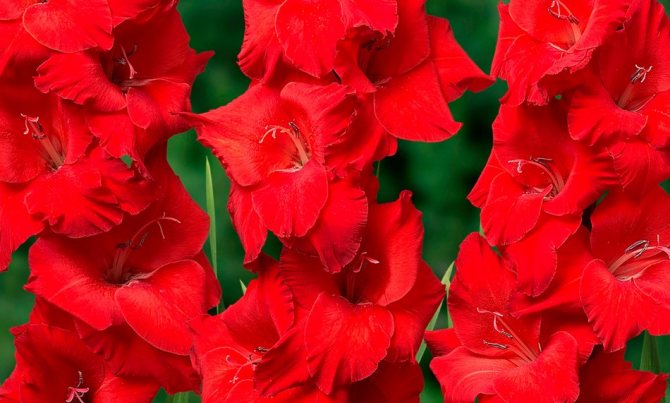

- Emily McKenzie... It tolerates temperature changes well. Inflorescences are spike-shaped. The color is orange, rich. It reaches a height of 60 cm.
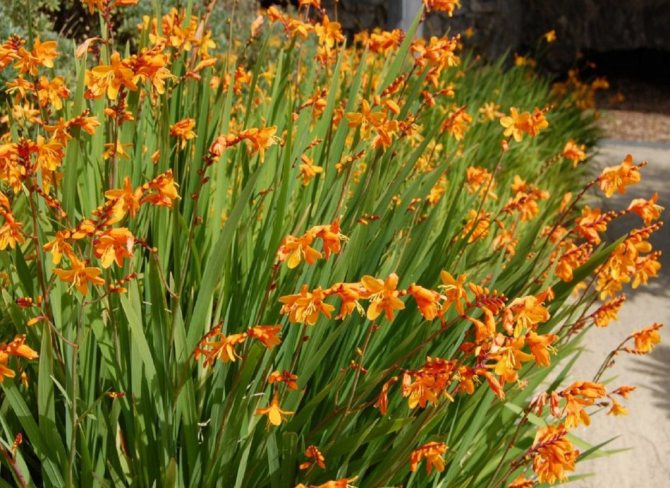

- His Majesty... Poorly tolerates frost. It winters better indoors.
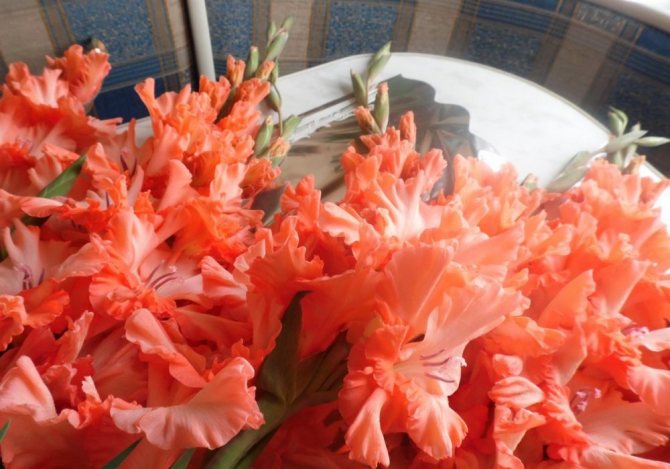

- Potts... Has small pink inflorescences. Grows up to 1 m.
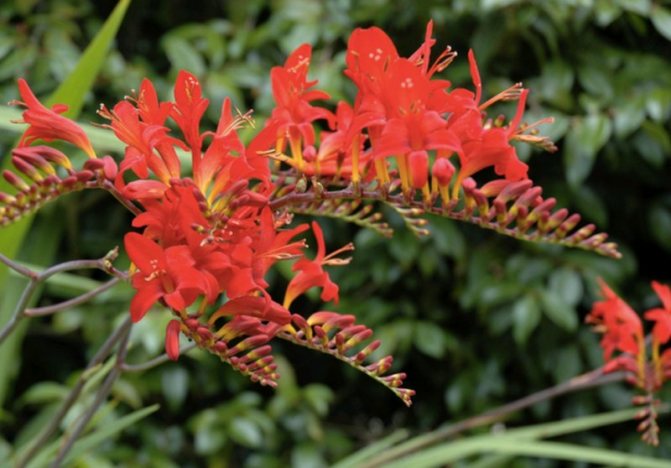

- George Davison... It adapts well to new climatic conditions. The flowers grow amber in color. The stems grow no higher than 80 cm in height.
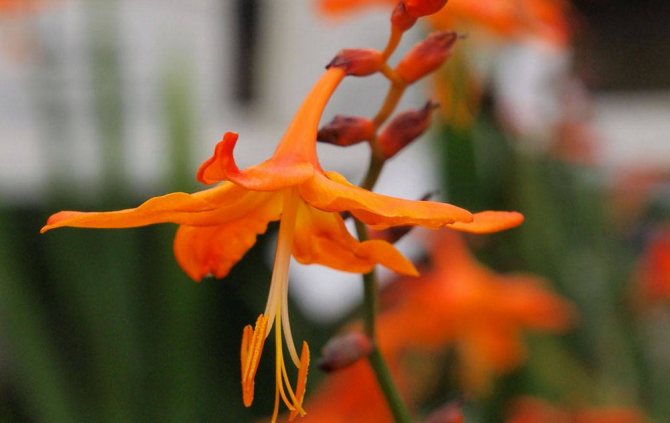

- Masoniorum... The variety is tall. Reaches 1.5 m. The color is orange.
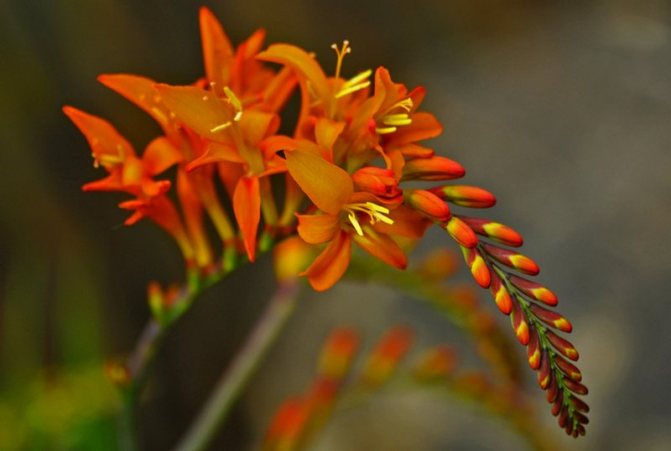

- Babylon... Stunted. It grows to a maximum height of 50 cm. It has an orange color.
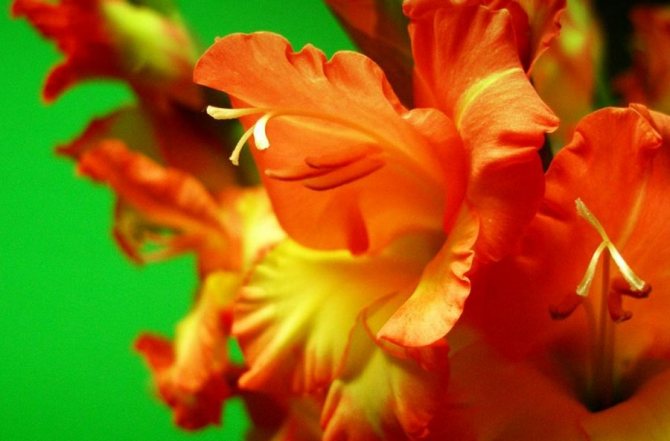

- Paniculate... Tall, frost-resistant. Inflorescences are orange.
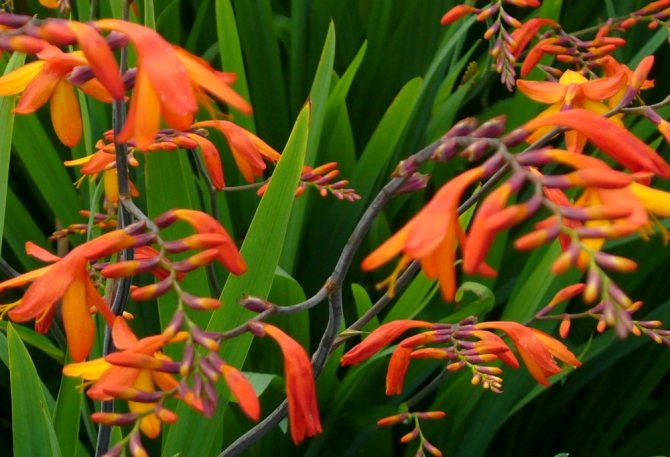

- Star of the East... It has large flowers of orange shades. Poorly tolerates frost.
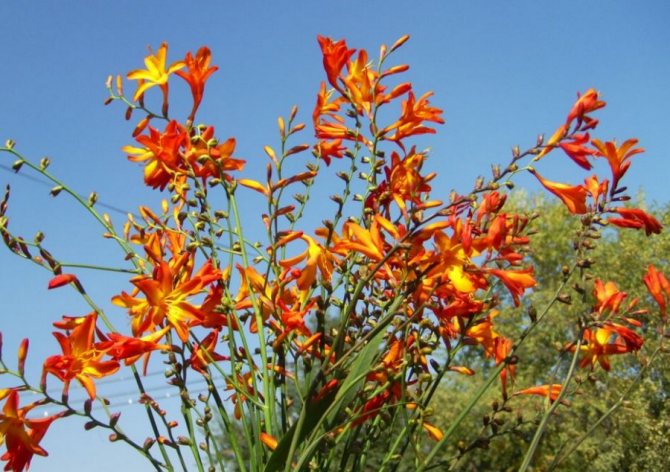

No less popular among landscape designers is the Canary Islands variety. The flowers of the plant are yellow. It has a decorative shape and reaches a maximum height of 60 cm.
Planting and care
The exquisite plant is among the favorites of novice gardeners and landscape art professionals, not only because of its unique appearance. This bulbous culture is unpretentious and caring for it will not give you much trouble. The main thing is to choose high-quality planting material and determine a site suitable for the composition of the soil. And then the montbrecia will delight you for a long time, from early summer to late autumn, with flowering and lush armfuls of densely collected unusual leaves.
Learn what to do to make gladioli grow and bloom quickly.
When buying large, which means enough adult bulbs, you can appreciate the beauty of the flower in the first year. In general, the planting unit is productive no more than 4 years and too large a diameter, more than 4-5 cm, indicates old age and unsuitability of the material. The main sign of health is a clean, neat bottom and the absence of any mechanical damage on the surface.
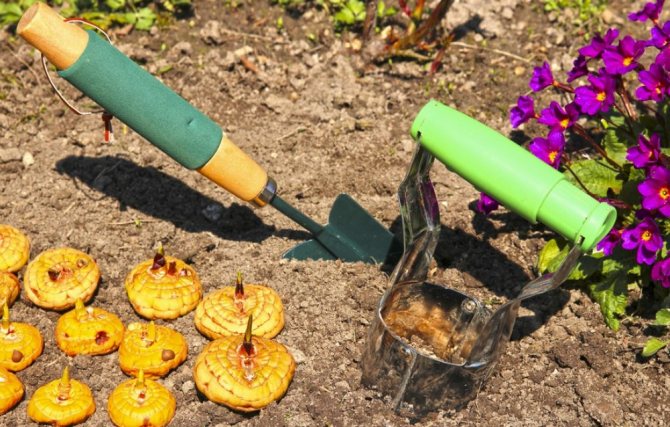

As a rule, two sprouts hatch on these at once and, having peeled the husk, you can see a deep dividing line. It is along this groove that the corm can be easily divided in two with little effort. It is not recommended to purchase overdried material, but if you have already received a dehydrated product, for example, in a long-awaited package, then try to revive it. Place the plants in a container of damp moss and leave in a moderately cool part of the refrigerator or underground until fully restored.
Important! Peeled bulbs after processing will better absorb all the nutrients and trace elements. Such flowers are more resistant to environmental influences and pests are less likely to settle on them.
It is impossible to guarantee the result, but sometimes it helps. If you are using your own bulbs and babies, be sure to remove them one month before your intended planting date. Before planting, free the nests from excess roots and stems, separate if they are too overgrown, and place in a weak solution of potassium permanganate for disinfection and early awakening. Now decide on the site.
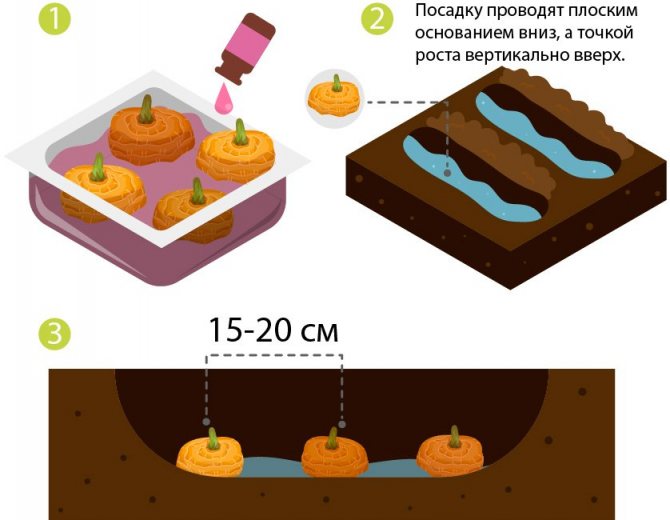

It should be sheltered from the wind, well lit, especially in the morning, a place. Keep in mind that the plant is sprawling and will need a lot of space to showcase the beauty of the inflorescences. Check that there is no accumulation of moisture inside, even temporary. If the soil needs drainage, add sand.
Another specific feature of the Japanese gladiolus is easy and always effective cross-pollination. If you are interested in obtaining varietal seeds with a certain color and in preserving the species, then make sure that the bushes are at a sufficient distance from each other. On the other hand, by giving the plants freedom, you can get the most unpredictable options.
Video: planting a Japanese gladiolus
Bulbs storage rules
In the northern regions, the bulbs must be dug out of the soil without fail. It is important to do this before frosting, as the foliage of the plant will turn yellow. Then cut off the stem of the dug out bulb at a height of 5 cm from its base.After that, dry the material in the fresh air, placing it in the shade or in a room with a temperature of +10 degrees.
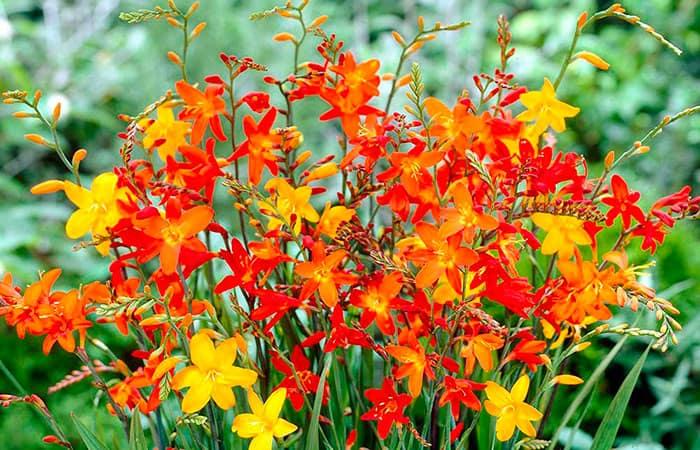

After drying, the bulbs are stored in boxes with sawdust and placed in a room with a temperature of +5 degrees. The basement and cellar will serve as storage. You can store the corms in the refrigerator by placing them on the lower shelf, after wrapping them in paper or cotton cloth.
Preparing montbrecia for winter
This flower is not capable of hibernating in open ground, with the exception of the southernmost regions of our country, where you can get by with simple shelter. You will need to dig up the corms and store them until spring in a cool place protected from the sun, drafts and small pests. The main skill lies in the correct timing of digging the bulbs. This must be done before frost, which will destroy the bulbs, but you must not rush.
You will be interested to know if it is possible to prepare folk remedies based on gladiolus.
You need to start work after the foliage turns yellow in October, and if it is warm, then in November. An unripe bulb will not be able to survive the winter. Trim the stem immediately, leaving no more than 3‒5 cm from the root. Let the bulbs dry without separating the babies for 1-2 weeks, and only then place them in a permanent storage area.
What to do after flowering
How and when are the seeds of the plant harvested?
If flower growers are already growing crocosmia, then most likely they will no longer need seeds. After all, someday it will be necessary to separate the children from the corms, which means that the planting material is already available. And for those who are just going to plant Montbrencia, it is advisable to buy seeds in a store.
How is crocosmia prepared for wintering?
People living in cold regions need to dig up corms in the fall. This is done no earlier than mid-October, that is, the period of the formation of children. The tubers are dried under good air flow, at a temperature of 10 degrees, and then stored, like the planting material of gladiolus.
In areas with a warm climate, you can leave the corms in the soil, but fertilize the area with compost and cover the top with a film. After the end of the frost, the shelter is removed, and the old foliage of the Montbrencia is cut off near the surface of the site.
How to care in winter
If you live in the southern region or you got frost-resistant varieties, then instead of digging up, prepare the plant for wintering in the ground. To do this, cut the stems to ground level and cover with a layer of dry (required) sawdust or straw. Be guided by the weather, if necessary, spruce branches or a special film can become additional shelter. Woven fabrics are not acceptable.


The risks with this option are great: cold, rotting, rodents. But a plant that has overwintered in the ground grows stronger and more luxuriant, with a dense green mass, and the flowering of such montbrecia is abundant and long. It must be borne in mind that the flowers grow strongly and form many children every year. Therefore, even if you do not remove the bush for the winter, it will still need to be transplanted at least once every 4 years.
Important! If you are not using a gladiolus fertilizer, you can feed the flower. For this, nitrophoska or
«
Kemira
»
.
Otherwise, having thickened, it will lose strength, harmony and brightness of flowering. Or it may even refuse to bloom altogether. Among gardeners, such an interesting form of wintering crocosmia is also used, as a pot transplant. So you can admire the flowering for another 3-4 weeks and only then dig up the bulbs and place them until spring in the traditional way.
Video: preparing irises for winter
Application in landscape design
A beautiful plant can decorate any flower bed, so designers prefer this flower when decorating landscapes:
- The Chinese gladiolus looks spectacular with crops such as dahlia, echinacea, daylily.
- Good neighbors for montbrecia are ornamental grasses, representatives of cereals.
- Blooming crocosmia is often placed against the background of stunted plants, in the forefront of mixborders.
- Japanese gladiolus is also used as a groundcover in gardens.
- A bright perennial can be planted in groups in the middle of the lawn, along the curbs.
- Looks great with lush blooming dahlias and bush salvias.
Advice! The plant is recommended for cutting, as the inflorescences stand in water for more than 10 days. And dried flowers retain their color and shape for a long time, therefore they are used to make winter bouquets.
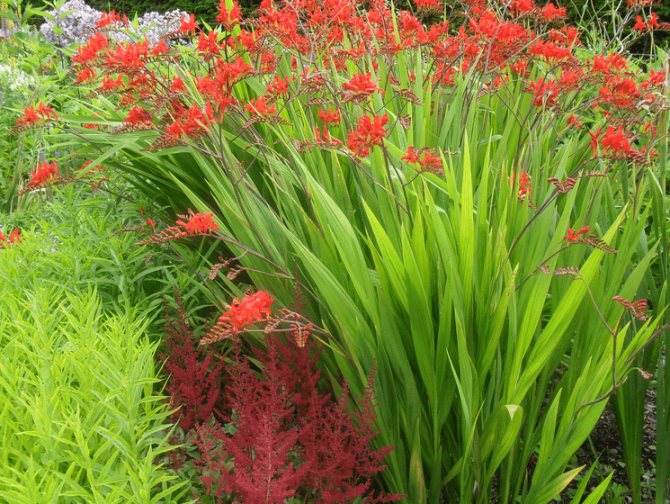

Pests and the fight against them
Of insects, thrips are most often annoying montbrecia. They hide under corms and multiply abundantly when they enter the ground. Silver spots and dots appear on the leaves and stems. The thrips are concentrated in the places where the flower arrow is ejected. After that, they penetrate the bud and damage it, so that it loses color, stops growing and dries up. As soon as it gets colder, the thrips descend closer to the bulb. They hibernate under the tissues of tubers and severely damage them during hibernation.
As a result, the bulbs lose moisture, shrivel and dry out. The most effective method of dealing with these pests is to cut the affected stem. It is important to remove it from the site or burn it so as not to infect the rest of the flowers. It is recommended to immerse the infected bulbs in hot water for 5 minutes. or spray with "Karbofos", then they must be well dried. When storing tubers, it is recommended to sprinkle them with chalk as a preventive measure.
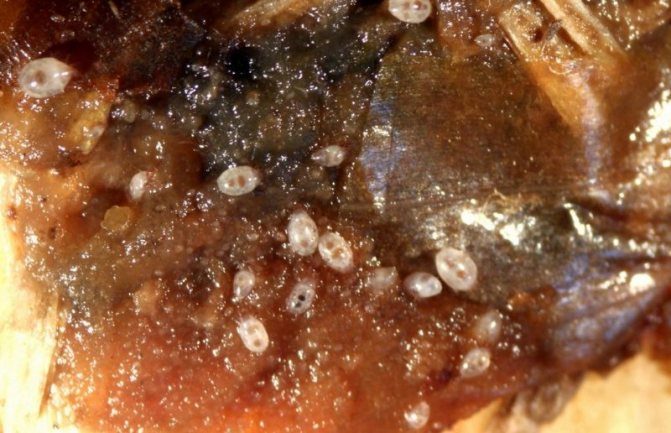

Also gladioli can be affected by an onion mite. It infects the flower tubers and penetrates them through damaged areas. This pest lives in the ground. It sucks out all the juice from the bulb, causing the plant to dry out and wither. Mites can overwinter in bulbs if they are not properly cleaned before storage. The main control method is to use an uncontaminated planting site for several years. Infected bulbs are poured over with hot water, dried and stored.
Did you know? The name of gladiolus was coined by the ancient Roman writer Pliny the Elder, who compared the flower with an ancient Roman sword.
gladius. Montbretia got its name from the French botanist de Montbret.
It is recommended to treat the plant during the growing season with a solution of "Karbofos" or "Keltan". Now you know why it is worth using Japanese gladioli when decorating garden compositions on your site. They will become an integral part of the flower family, especially when using a perennial variety. A wide variety of varieties gives you the opportunity to choose the right shrub for a particular place, so that gladioli delight with flowering as long as possible.
Growing conditions
The Japanese gladiolus feels comfortable in loose, well-drained, humus-rich soil.
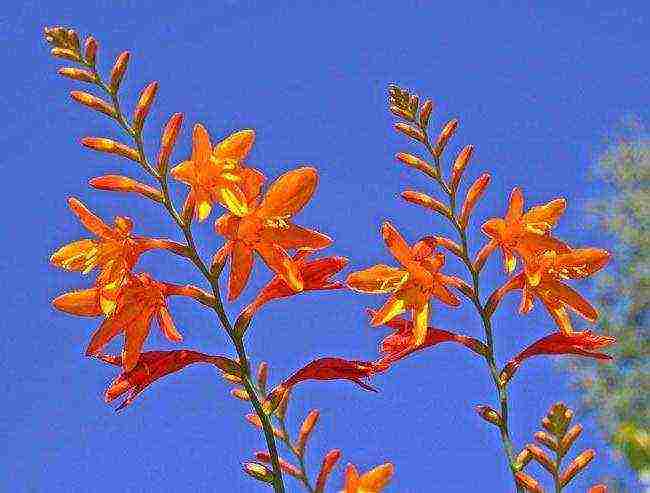

It is advisable to choose a place for landing that is well-lit, without drafts and sunshine on a summer afternoon. You should not plant the montbrecia in the shade, otherwise the plant will begin to stretch and will not bloom at all.
Since the fall, the site on which it is planned to grow Japanese gladiolus needs to be prepared by adding organic fertilizers to the soil in combination with slaked lime and superphosphate. Before budding, and then every 2-3 weeks, Japanese gladiolus, the cultivation of which is not too troublesome, is recommended to be fed with mineral fertilizers.



